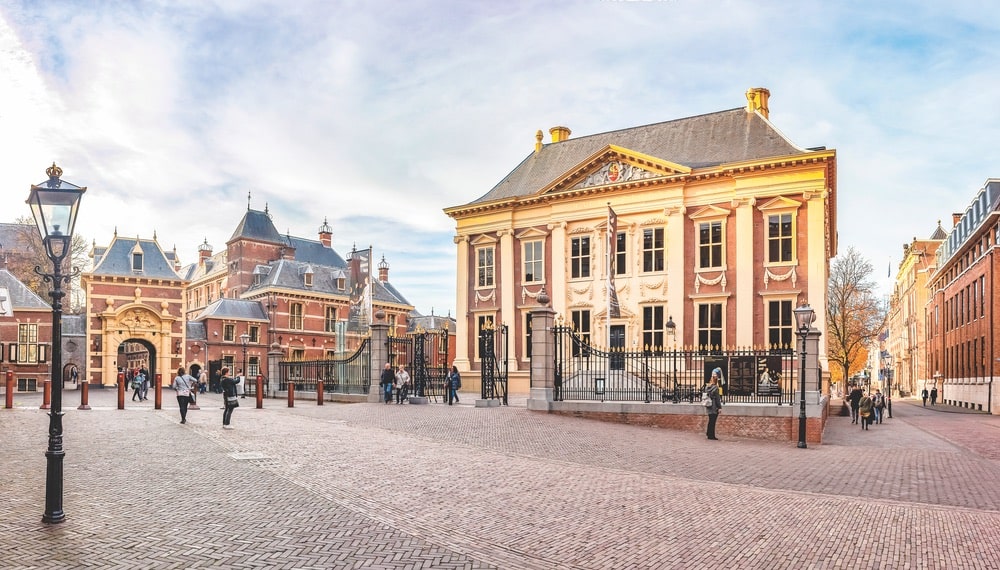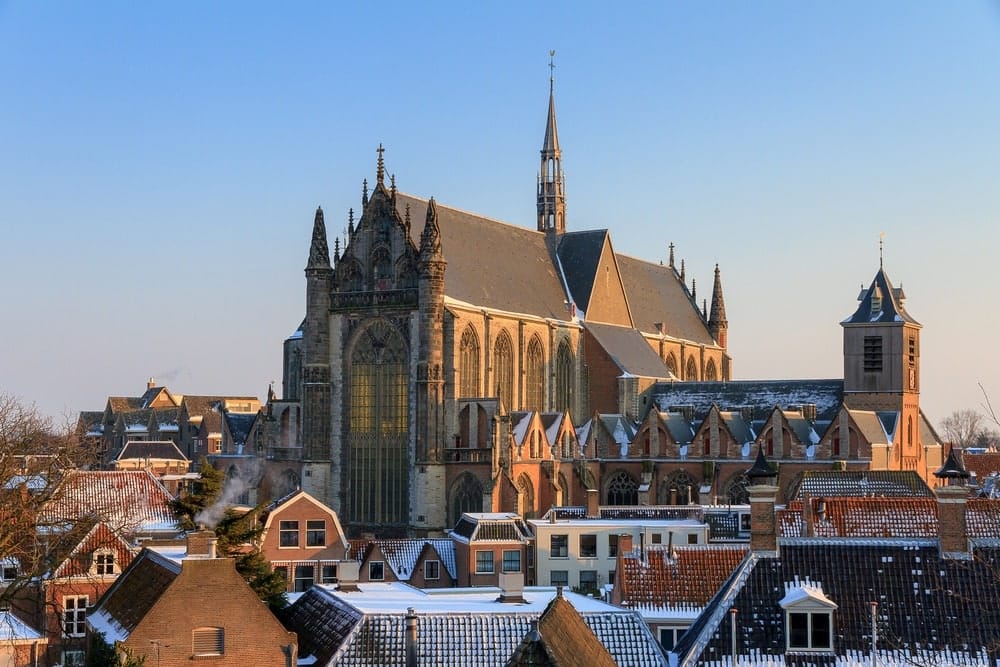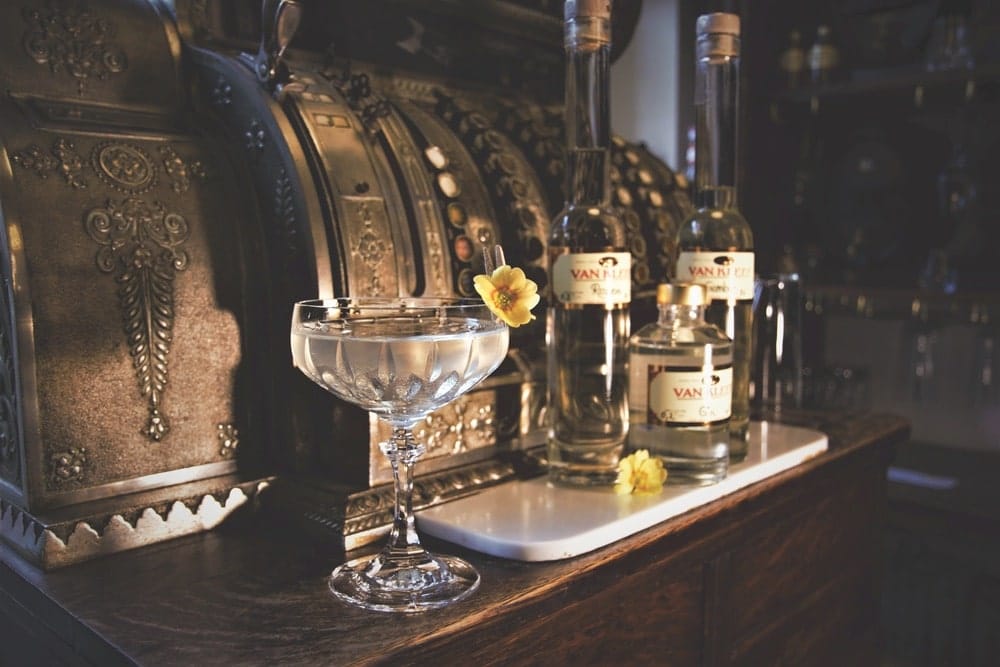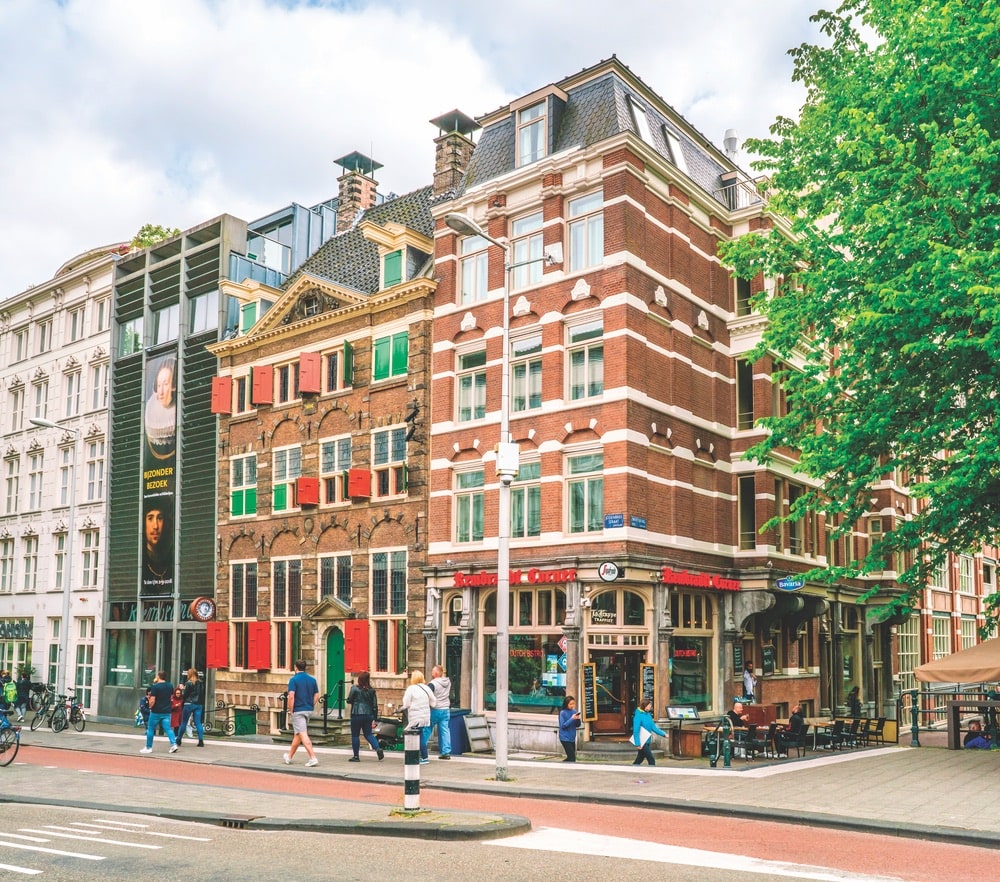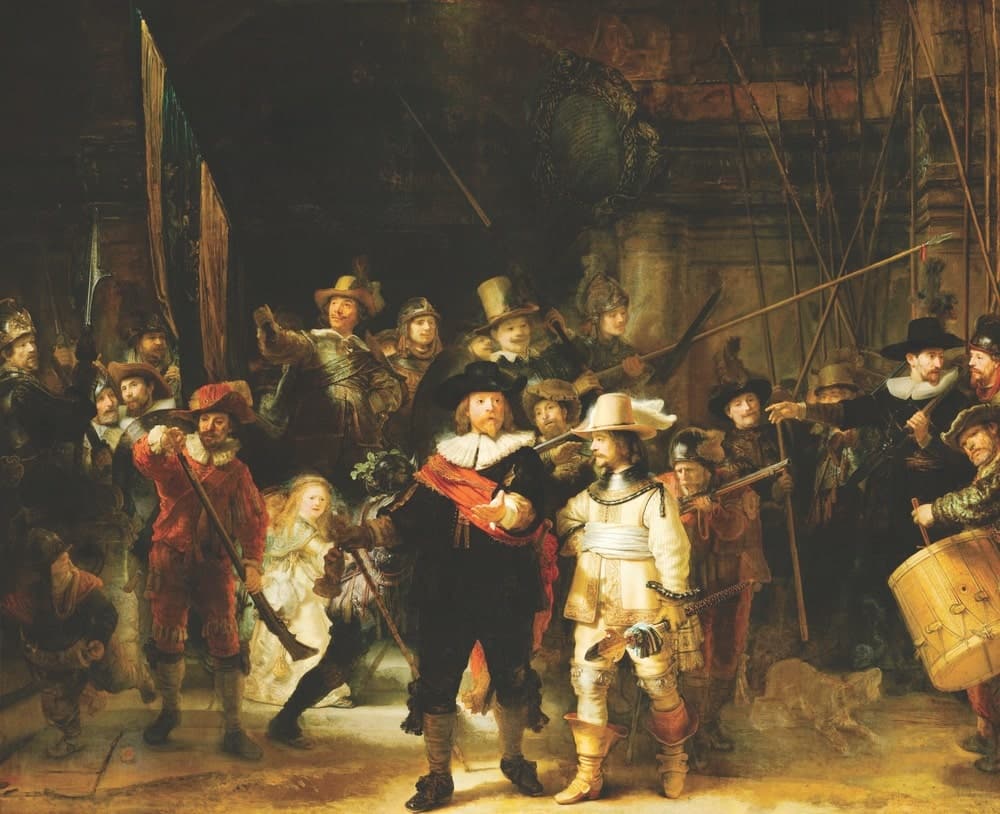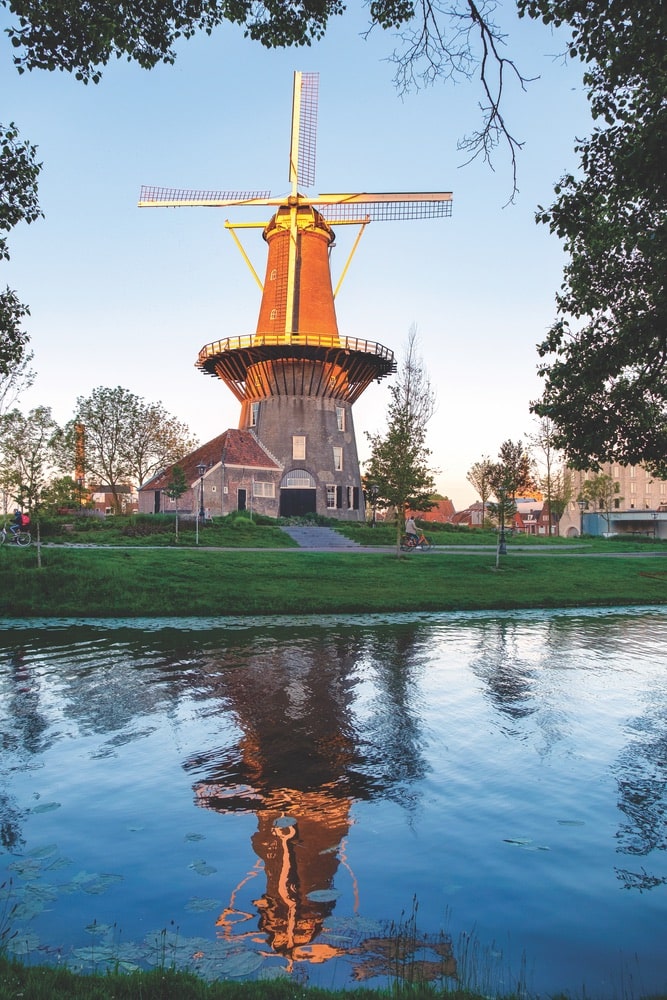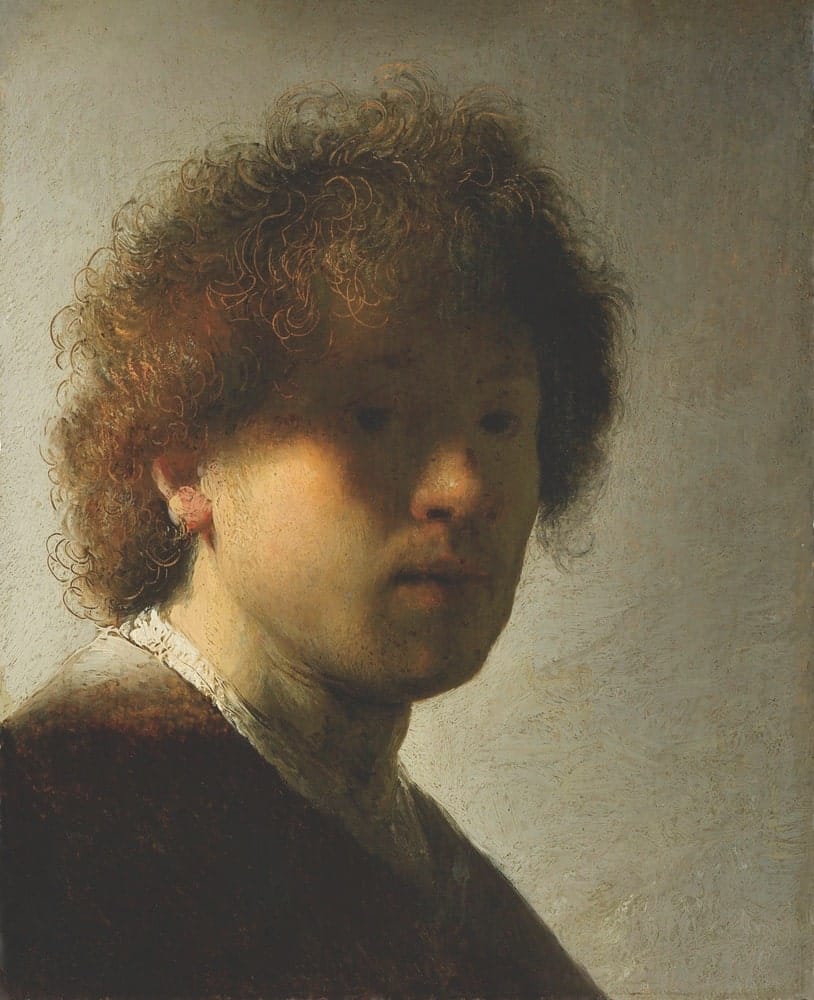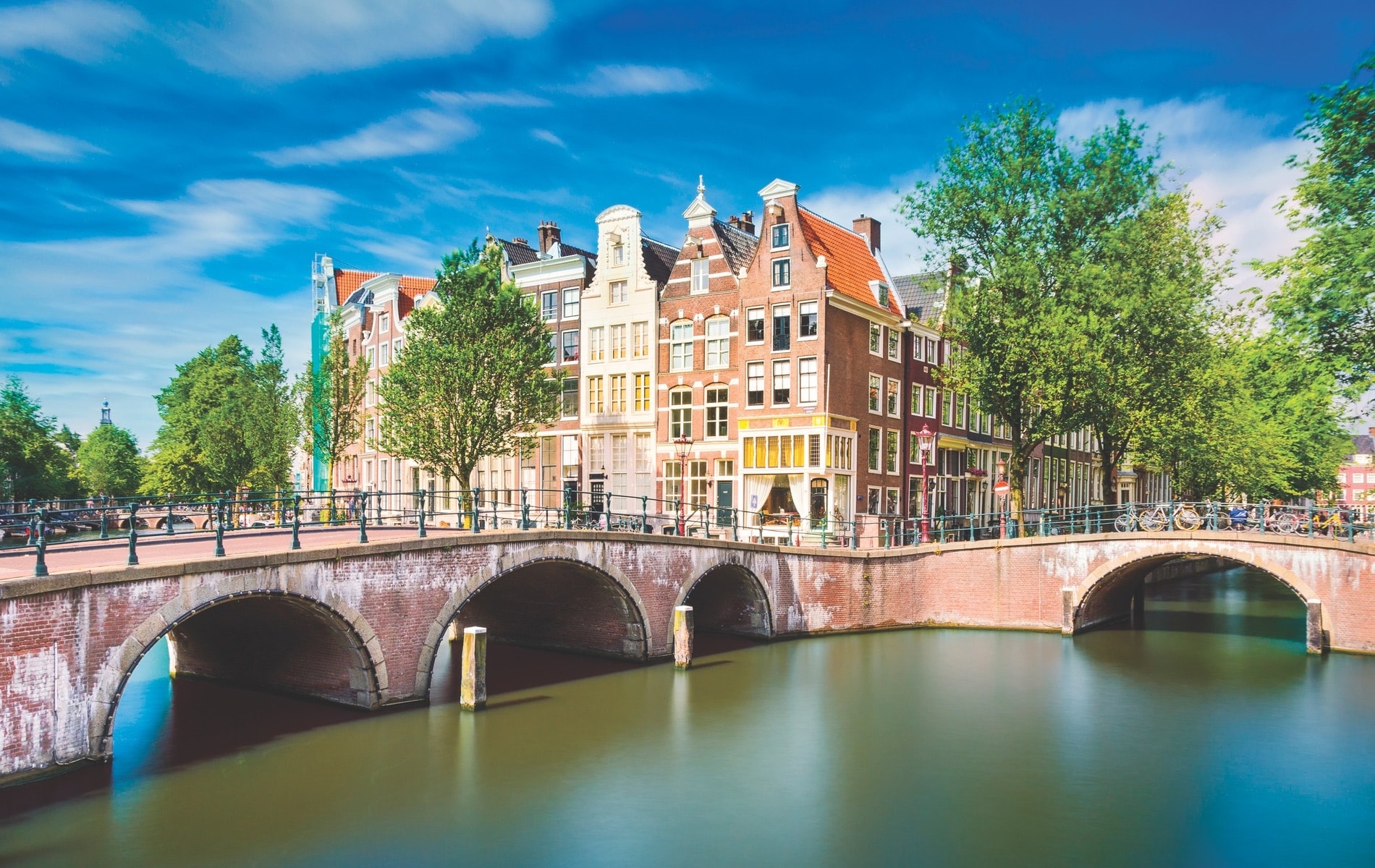
vie-magazine-holland-rembrandt-festival-hero-min
Amsterdam was one of three cities on writer Sarah Freeman’s trip to discover the history of famous Dutch painter Rembrandt van Rijn. | Photo by Mapics/Shutterstock
The Master of Light and Shadows
By Sarah Freeman
Three cities and one remarkable artist’s legacy. Sarah Freeman journeys to the Netherlands to mark the 350th death anniversary of one of the most beloved Dutch masters, Rembrandt.
Holland, the flat-as-a-pancake country that’s gifted the world tulips, clogs, and whirring windmills, is 240 times smaller than the United States, but four hundred years ago, it was the foremost maritime and economic power in the world. Driven by new freedom from Spanish Catholic rule, the Dutch Golden Age (spanning 150 years) was an era of unprecedented prosperity and creative discovery, thanks to artists like Johannes Vermeer, Frans Hals, and Jan Steen. But one Dutch Golden Age artist’s legacy trumps them all—Rembrandt van Rijn, whose life and oeuvre are being commemorated with a series of exhibitions and events across the country until early 2020.
Leiden: Golden Beginnings
To scratch beneath the impasto of the man behind the masterpieces, my first port of call is Rembrandt’s birthplace, Leiden. A love letter to the Golden Age, the university city’s cobbled streets, canals, city windmills, and hidden poorhouses are steeped in seventeenth-century nostalgia. The leader of the Leiden Pilgrims, William Bradford, wasn’t exaggerating when he described it as “a fair and beautiful city, and of a sweet situation.”
The story of the United States’ early colonists begins in liberal Leiden. The Plymouth Pilgrims lived here for a decade before setting sail for the New World in 1620, putting down roots in what is now Plymouth, Massachusetts. Their time in Leiden is memorialized at the city’s American Pilgrim Museum, a fourteenth-century townhouse near Hooglandse Church.
- Panorama photo of the Mauritshuis museum in The Hague, home of the best collection of Dutch Golden Age paintings | Photo by DigitalPearls/Shutterstock
A five-minute hop, skip, and occasional stumble over the cobbles from the museum is another storied address, built three centuries later on Langebrug, where a young Rembrandt was apprenticed to master Jacob van Swanenburgh. The building has been reborn as the Young Rembrandt Studio, where state-of-the-art video mapping of the artist’s early years is the perfect beginning for a self-guided Rembrandt walking tour. Between canalside iced coffees, I make a pilgrimage to the artist’s red-shuttered Latin School, Leiden’s Gothic cathedral where the master painter sang in the choir, and Weddesteeg, his quayside address until 1631. The trail finishes up at Museum De Lakenhal, the axis of Leiden’s booming textile trade during the Dutch Golden Age. The former cloth hall now safeguards the artist’s earliest surviving painting: A Pedlar Selling Spectacles (Allegory of Sight), displayed alongside 40 paintings, 120 etchings and 20 drawings as part of the Young Rembrandt – Rising Star exhibition (November 2019–February 2020).
Trading one landmark building for another, I make my way to the monumental Leiden City Hall to graze on Italian bistro-style fare at its namesake restaurant. One pear-and-pecorino-stuffed tortellini later, I load my extra cargo onto Rondvaart Leiden’s vintage narrow boat to explore Old Leyden’s green-fringed moats. Now a portal into the city’s cultural heritage, these bucolic waterways (complete with bobbing ducks and weeping willows) at one time defended the city’s outer walls. Sun bouncing off the mirror-smooth water, we glide past the city’s greatest and greenest hits: Holland’s earliest botanical garden (which seeded the country’s first tulip), the world’s second-oldest university observatory, and the enormous sundial at the De Sleutels flour mill. One final chug along Leiden’s most beautiful canal, the Rapenburg, is a fitting farewell to Rembrandt’s hometown.
- The Rembrandt House Museum in the old Jewish quarter of Amsterdam celebrates the 350th death anniversary of the Dutch master this year. | Photo by Ivo Antonie de Rooij/Shutterstock
- The Night Watch by Rembrandt van Rijn, 1642
Amsterdam: Capital Gains
Set on building his fortune, Rembrandt moved to Amsterdam in 1631, the second installment of my Dutch trip-tych. Traveling on two wheels is a rite of passage in the Dutch capital, so I join the city’s 850,000 cyclists and ride to Rembrandthuis, the painter’s 1639 house turned museum. Crowd-pleasing painting demos, which take place in his north-facing studio, reveal how the master of chiaroscuro mixed his famous palette. I head straight upstairs to admire Rembrandt’s rarest etching, The Hundred Guilder Print, wrapping up at the upper floor’s Cabinet Room that overflows with exotic paraphernalia and dusty art books archiving sketches by the likes of Michelangelo.
While Amsterdam’s Amstel River was a favorite subject of Rembrandt’s, curiously, not one of his four hundred paintings or eight hundred etchings immortalized the construction of the city’s seventeenth-century canal belt, a triumph of the Golden Age. On Canal Tour Amsterdam’s Rembrandt-themed Open Boat Goes Golden Age tour (booked through Stromma.com), you travel back in time to this illustrious era, plying the city’s trio of historic canals: the Herengracht, where wealthy merchants’ homes flank the canal; the Keizersgracht, named after Emperor Maximilian of Austria; and the Prinsengracht, which was once a working-class area.
Home to the most extensive collection of Rembrandts in the world, the Gothic-inspired behemoth will be unveiling its ambitious Rembrandt–Velázquez exhibition in October
Between the city’s iconic grachtenpanden (canal houses) and innumerable bridges, we tick off landmark sites like century-old Beurs van Berlage (formerly a commodities exchange) and Western Church, where a destitute Rembrandt is buried in an anonymous plot. His beloved wife, Saskia, is also buried in the church. Tragically, she died at the age of twenty-nine in 1642—the same year Rembrandt completed The Night Watch, a three-year labor of love. Visitors can watch the celebrated masterpiece’s multimillion-dollar restoration while it stays on display behind glass at the Rijksmuseum. Home to the most extensive collection of Rembrandts in the world, the Gothic-inspired behemoth will be unveiling its ambitious Rembrandt–Velázquez exhibition in October—a collaboration with Madrid’s Museo del Prado.
The Hague: Having a Royally Good Time
As the seat of the House of Orange, The Hague was the center of power at the height of the Golden Age. The embodiment of this era’s riches is Lange Voorhout, the city’s most magnificent boulevard “where royalty from Europe would parade in their carriages to see and be seen,” snappily dressed art historian and Hagenaar (inhabitant of The Hague) Remco Dörr tells me. The next stop on our two-wheeling tour of the city is Hotel Des Indes, a former party palace turned grand hotel, which sits in all its colonial splendor at the end of leafy Lange Voorhout. Opposite the hotel is Escher in Het Paleis, a museum housed in what was once Queen Emma’s winter palace. Fans of the Dutch graphic artist M. C. Escher flock here to see his mind-bending Day and Night, one of America’s most-sold posters in the swinging sixties.
- The windmill and museum De Valk in Leiden is one of the city’s most popular attractions. | Photo by Alfio Finocchiaro/Shutterstock
- Self-Portrait by Rembrandt van Rijn, 1628 (age twenty-two)
Our next artistic address is Mauritshuis, a temple to Golden Age art, housing the second-largest permanent collection of Rembrandt paintings in Holland. The artist’s highlight reel: his first official commission, The Anatomy Lesson of Dr. Nicolaes Tulp; the shadowy Saul and David (only declared a legit Rembrandt four years ago); and his last self-portrait from 1669, are all here. So, too, are the best of his contemporaries, like Vermeer and his iconic Girl with a Pearl Earring—bought for the equivalent of around thirty dollars back in 1881. It keeps good company with Hendrick Avercamp’s Winter Landscape with Skaters (1608), Holland’s most popular Christmas card, brought to life most winters when the city canals transform into one giant ice rink.
Art gorging done for the day, I step outside to an Avercamp-worthy scene—the city’s grand parliament house, Binnenhof, reflected in the swan-plied Hofvijver Lake. Opposite sits De Plaats, one of the oldest squares in town, where I sate my appetite at Jamey Bennett restaurant. Inside, it’s all exposed brickwork and chesterfield sofas—a cozy backdrop for dishes like fennel salad with apple and pomegranate and mint pesto rack of lamb. Suffice it to say, I’m well on my way to a Rubens figure, as the Dutch would say!
Van Gogh famously said, “Rembrandt is above all a magician.” Seven days and a hundred-plus paintings and etchings later, I’m convinced I’ve fallen under the artist’s spell too.
My stylish city escape (and the perfect place to sleep off a long lunch) is the newly opened Ibis Styles, located a whisper from the Old City Hall and The Hague’s hop-on-hop-off tram. Set in a heritage building designed by Holland’s first modernist architect, Hendrik Petrus Berlage, it’s a vision of black welded steel, wood, and glass, offset with art nouveau flourishes and a gorgeous staircase.
As the night draws in, I spend my final evening in the city’s last remaining liqueur distillery, Van Kleef, where I raise a glass of jenever (the ancestor of modern gin) to the Dutch master. One of the 1842 museum-cum-shop’s most famous patrons was none other than Vincent van Gogh, who, much like Rembrandt, was obsessed with self-portraits: the original selfies, as it were. Van Gogh famously said, “Rembrandt is above all a magician.” Seven days and a hundred-plus paintings and etchings later, I’m convinced I’ve fallen under the artist’s spell too.
— V —
Train travel between Leiden, Amsterdam, and The Hague can be booked on the web at NS.nl. Head to Holland.com for more information on planning a trip to the Dutch country.
Brit-born Sarah Freeman’s appetite for adventure has taken her to some far-flung corners of the earth, from Indonesia’s remote Mentawai Islands to the snow-capped peaks of the Cordillera Blanca in Peru. The internationally published travel writer and photographer regularly racks up air miles on assignment for Bloomberg, Sunday Times Travel, and Harper’s Bazaar.
Share This Story!
KEEP UP WITH THE LATEST STORIES FROM VIE



